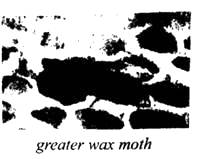Evan Selinger, professor in RIT's Department of Philosophy, has taken an interest in the ethics (伦理标准) of Al and the policy gaps that need to be filled in. Through a humanities viewpoint, Selinger asks the questions, "How can AI cause harm, and what can governments and companies creating Al programs do to address and manage it?" Answering them, he explained, requires an interdisciplinary approach.
"AI ethics go beyond technical fixes. Philosophers and other humanities experts are uniquely skilled to address the nuanced (微妙的) principles, value conflicts, and power dynamics. These skills aren't just crucial for addressing current issues. We desperately need them to promote anticipatory(先行的) governance, " said Selinger.
One example that illustrates how philosophy and humanities experts can help guide these new, rapidly growing technologies is Selinger's work collaborating with a special AI project. "One of the skills I bring to the table is identifying core ethical issues in emerging technologies that haven't been built or used by the public. We can take preventative steps to limit risk, including changing how the technology is designed, "said Selinger.
Taking these preventative steps and regularly reassessing what risks need addressing is part of the ongoing journey in pursuit of creating responsible AI. Selinger explains that there isn't a step-by-step approach for good governance. "AI ethics have core values and principles, but there's endless disagreement about interpreting and applying them and creating meaningful accountability mechanisms, " said Selinger. "Some people are rightly worried that AI can become integrated into 'ethics washing'-weak checklists, flowery mission statements, and empty rhetoric that covers over abuses of power. Fortunately, I've had great conversations about this issue, including with some experts, on why it is important to consider a range of positions. "
Some of Selinger's recent research has focused on the back-end issues with developing AI, such as the human impact that comes with testing AI chatbots before they're released to the public. Other issues focus on policy, such as what to do about the dangers posed by facial recognition and other automated surveillance(监视) approaches.
Selinger is making sure his students are informed about the ongoing industry conversations on AI ethics and responsible AI. "Students are going to be future tech leaders. Now is the time to help them think about what goals their companies should have and the costs of minimizing ethical concerns. Beyond social costs, downplaying ethics can negatively impact corporate culture and hiring, " said Selinger. "To attract top talent, you need to consider whether your company matches their interests and hopes for the future. "
